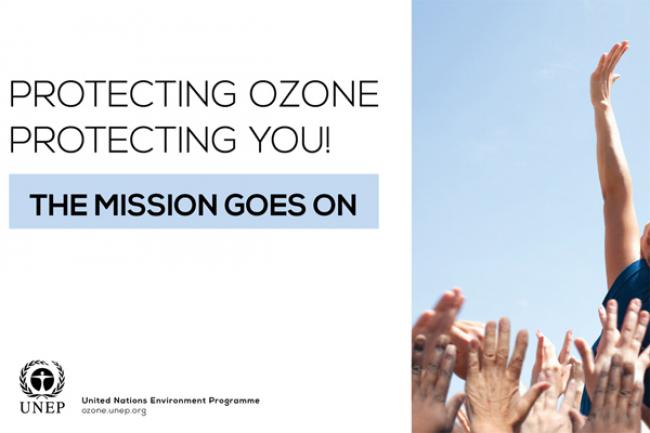17 Sep 2014, 06:01 am Print

“Just over a quarter-century ago, the world united to reverse the rapid depletion of the atmospheric ozone layer, which protects Earth from harmful radiation from space. On Tuesday, the ozone layer is well on track to recovery within the next few decades,” Secretary-General Ban Ki-moon said in his message for the International Day for the Preservation of the Ozone Layer.
The Day is observed annually on 16 September, the date of the signing of the Montreal Protocol on Substances that Deplete the Ozone Layer, which entered into force in 1989. The Protocol establishes legally binding controls on the national production and consumption of ozone-depleting substances, and enjoys universal ratification by 197 parties.
Recent scientific findings reveal the importance of the Montreal Protocol, said the Secretary-General, noting that without this treaty and associated agreements, atmospheric levels of ozone-depleting substances could have increased ten-fold by 2050.
The Protocol has also significantly contributed to the fight against climate change, as many ozone-depleting substances are powerful greenhouse gases, he added.
“Let us take inspiration from our efforts to preserve the ozone layer. The Montreal Protocol has shown that decisive action by the international community, including the private sector, can achieve transformative results for the common good. Let us learn from this example and apply its lesson to the urgent task of addressing the climate challenge,” Ban stated.
The ozone layer, a fragile shield of gas, protects the Earth from the harmful portion of the sun’s ultraviolet rays, thus helping to preserve life on the planet. A report released last week by the UN Environment Programme (UNEP) and the UN World Meteorological Organization (WMO) found that the ozone layer is on track to recover by the middle of the century.
The assessment by 300 scientists noted that the recovery is attributed to the collective action through the Montreal Protocol, which has led countries to carry out policies to reduce and then phase out their use of ozone-depleting chemicals. At the same time, the report called for the same level of urgency and unity to tackle the challenge of climate change.
Among those celebrating the International Day, whose theme this year is “Ozone Layer Protection: The Mission Goes on,” is the UN Industrial Development Organization (UNIDO) and the other implementing agencies of the Montreal Protocol.
“On Tuesday is a great opportunity for us to reflect on the remarkable progress that has been achieved in reducing the damage to the ozone layer. UNIDO is very pleased that our major contribution to the implementation of the Montreal Protocol over the years is now bearing fruit,” said Stephan Sicars, Director of UNIDO’s Montreal Protocol Branch.
Through the promotion of clean production, UNIDO has supported industries to eliminate the use of ozone-depleting substances in manufacturing processes. The agency helps industries to either replace these substances with ozone- and climate-friendly substances, or to redesign their products entirely. UNIDO’s projects and programmes have helped a number of countries introduce new technologies that no longer use the harmful substances.
“The Montreal Protocol has significantly reduced the atmospheric abundance of gases, such as chlorofluorocarbons (CFCs) and halons that were once used in products such as refrigerators, spray cans, insulation foam and fire extinguishers,” said Sicars.
“With full compliance with the Montreal Protocol, the ozone layer is expected to recover to 1980 benchmark levels – the time before significant ozone layer depletion – around the middle of the century. This is great news.”
Credit: UNEP
- Catastrophe alert: UN warns Asia is facing unprecedented cyclones and rainfall
- Catastrophe alert: UN warns Asia is facing unprecedented cyclones and rainfall
- India’s West Coast Turns Protector: Whale Shark Rescues Surge from Gujarat to Kerala
- Belém COP30 announces major climate finance boost
- Three dead after magnitude 5.7 earthquake hits Bangladesh, strong tremors felt in Kolkata



-1763561110.jpg)


